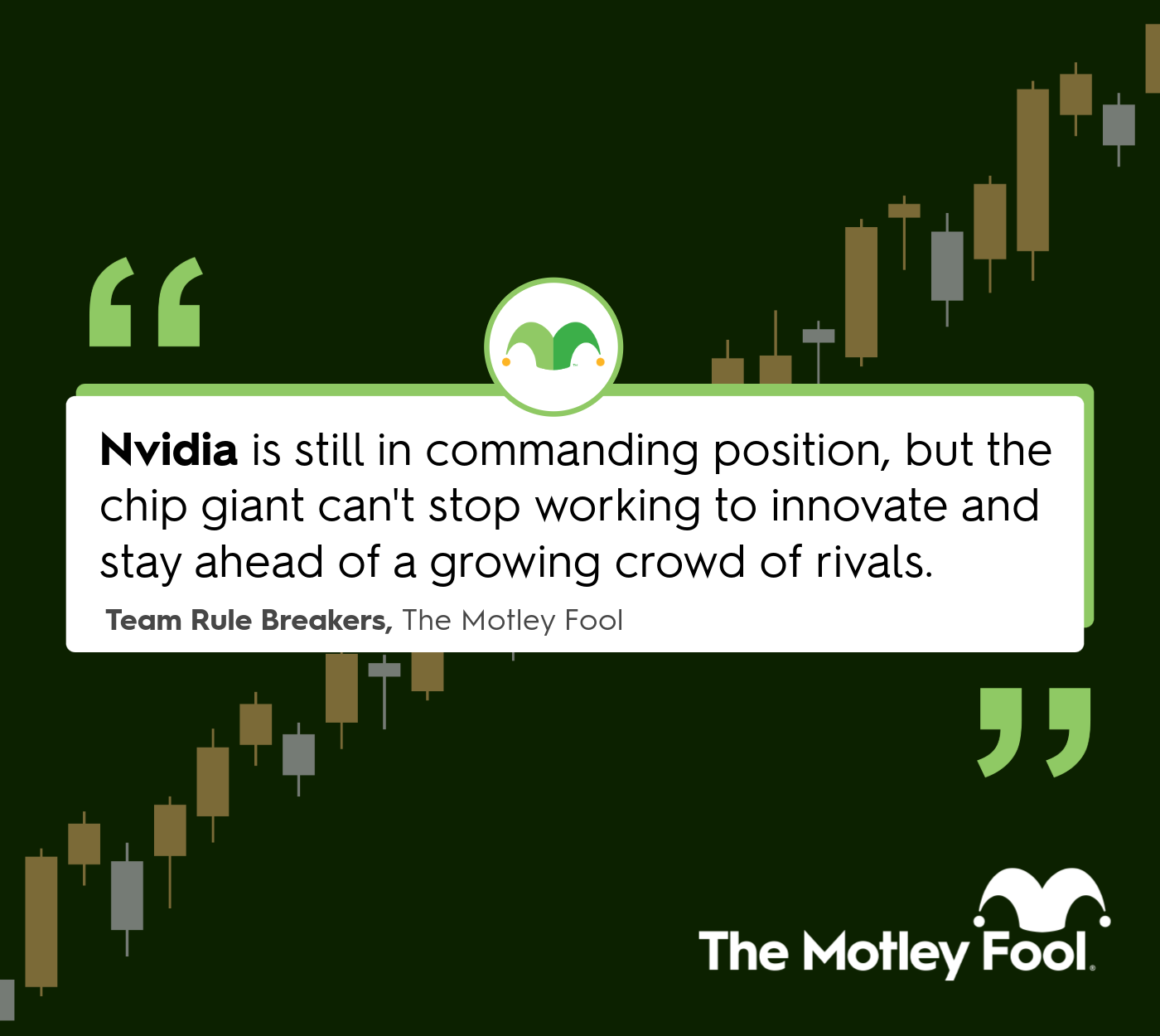In many ways, 2025 has been a year like no other. The combination of persistent inflation and tariff uncertainty has fueled historic volatility on the stock market -- and Nvidia (NVDA 2.09%) has been a textbook example. The stock climbed to a new all-time high to start the year, only to plunge 37%, before ascending to new highs. Recently, the stock has been taking a well-deserved breather before attempting its next leg higher.
Many see Nvidia as the bellwether for the adoption of artificial intelligence (AI), as its chips dominate the market for AI processing. This, in turn, has sent the stock up more than 1,000% (as of this writing) since early 2023. It also helped Nvidia take the crown as the world's largest publicly traded company by market cap, valued at $4.1 trillion. But that could be just the beginning.
One Wall Street analyst believes Nvidia is on track to be the world's first $20 trillion company, representing additional upside of more than 375%.

Image source: Getty Images.
A chip off the old block
In 1999, Nvidia pioneered the graphics processing unit (GPU) that rendered lifelike images in video games. What set them apart from earlier innovations was parallel processing, which allowed the chips to conduct a multitude of mathematical calculations simultaneously. By subdividing computationally intensive jobs into bite-sized chunks, they were able to speed processing time exponentially.
Nvidia then supercharged its GPUs with the addition of its Compute Unified Device Architecture (CUDA) programming platform and software architecture. This suite of tools helps developers optimize the performance of the GPU. The current list of libraries numbers more than 400, helping users "build, optimize, deploy, and scale applications across PCs, workstations, the cloud, and supercomputers using the CUDA platform." By helping developers, data scientists, and other users harness the raw power of the GPU, Nvidia has created a durable competitive advantage with incredibly high switching costs.
As a result, Nvidia is the dominant supplier of GPUs used for gaming, machine learning (an earlier branch of AI), cloud computing, data centers, and more. CUDA is deeply entrenched among developers, making Nvidia the clear favorite for AI.
The path to $20 trillion
Nvidia currently boasts a market cap of roughly $4.13 trillion, which implies stock price gains of 384% to drive its value to $20 trillion. According to Wall Street, Nvidia is poised to generate revenue of roughly $206 billion in fiscal 2026, giving it a forward price-to-sales (P/S) ratio of roughly 20. Assuming its P/S remains constant, Nvidia would need to increase its revenue to roughly $1 trillion to support a $20 trillion market cap.
Wall Street is currently forecasting revenue growth for Nvidia of 26% annually over the next five years. If the company can maintain that growth rate, it could actually achieve a $20 trillion market cap as early as 2033. This assumes plenty of things will go right for Nvidia and very little will go wrong in order for the company to scale these lofty heights, so the likelihood is pretty slim.

NASDAQ: NVDA
Key Data Points
A really bullish take
One veteran Wall Street analyst, however, is throwing caution to the wind. Phil Panaro, former Boston Consulting Group executive, said, "I believe Nvidia will hit $800 by 2030." That would put Nvidia's market cap at $19.5 trillion, zeroing in on $20 trillion.
The analyst cites several factors that he believes will drive Nvidia's valuation to $20 trillion. By Panero's estimates, AI adoption is currently at "less than 1%." It would only take penetration in the low to mid-single digits to fuel a fivefold increase in Nvidia's stock price. He also believes the adoption of Web 3 -- the next generation of the internet built on a distributed ledger (or blockchain) -- will be a catalyst, sparking $10 trillion in data center spending over the coming five years. Finally, he believes the continued government adoption of AI to drive down costs -- including the use of "digital twins" for the more than 300,000 government buildings -- which represents an underappreciated opportunity.
Panero believes these catalysts will fuel a spike in revenue that will spark a parabolic move higher and support Nvidia's future $20 trillion market cap.
Wishful thinking?
While the chances that Nvidia will hit that threshold over the next five years are remote, the company still has all the elements for a market-beating investment. These include strong management, industry leadership, and robust financial performance.
Experts suggest it's still early days for AI, and Nvidia is well-positioned to benefit from these secular tailwinds. Furthermore, the stock is currently selling for 26 times next year's earnings. While that's something of a premium, it's an attractive price for a company with such a vast opportunity.





